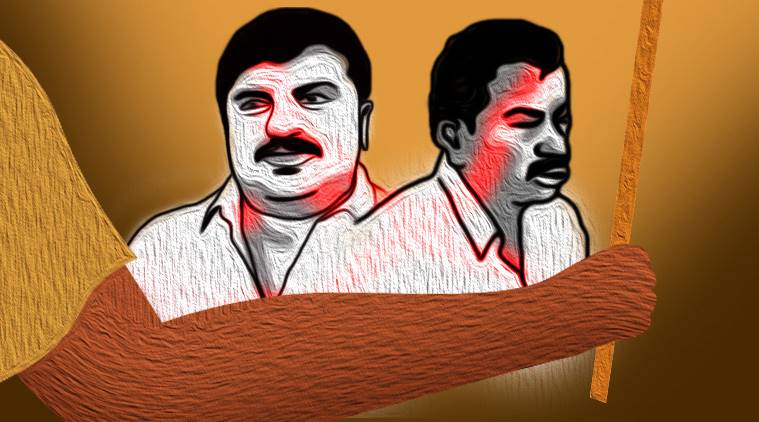DOMA KOUSHIK REDDY & ARNAV SINGH | 7 JULY, 2020
1,731 deaths in police or judicial custody were reported last year
P. Jeyaraj aged 62, a shopkeeper, and his son J. Bennix aged 32 were taken into custody by the Sathankulam police on June 19 for keeping their shop open past the lockdown curfew the previous day.
At the police station, these public employees began to systematically assault the father-son duo. The police tortured Bennix and Jeyaraj until around 5 o’clock next morning when they finally permitted the victims’ family to take them to hospital.
The duo struggled to sit in the car as the police assault had left them with serious injuries to their rectum, and they were bleeding profusely.
When they reached the hospital the doctors treated their injuries as best they could. They were then taken to the magistrate who remanded them to judicial custody and ordered them transferred to the Kovilpatti Sub-Jail.
On June 22 father and son were rushed to hospital as the bleeding from their rectums had not stopped. Both died due to excessive blood loss from the torture.
What was done to Jeyaraj and Bennix falls under Sections 330, 331 and 348 of the Indian Penal Code, which define custodial violence as violence committed on a person who is under either judicial or police custody, including torture and rape.
Such crimes are on the rise in India: according to the National Human Rights Council, 111 custodial deaths were reported in 1994 and 1,731 last year, over fifteen times as many.
When have our governments taken cognisance of violence perpetrated on people in police or judicial custody? We discuss here the recommendations made by committees and how they are still ignored, wasted opportunities that now haunt us in the face of rising custodial torture and killings.
The National Police Commission was the first committee of its kind established by the central government after independence: charged with making recommendations on the policing system, it published eight reports between 1979 and 1981.
These reports discussed and referenced cases of custodial violence and made recommendations to resolve them: to conduct a judicial inquiry whenever a custodial crime is reported, set up a separate body to monitor the activities of police wings, reduce politicians’ interference in police functioning, increase transparency to improve public perceptions of the police, institute a culture of accountability.
Another key recommendation was to set up separate wings for the communities marginalised by society, since the treatment meted out to them by police is often inhuman as ample instances show.
Had our governments implemented these recommendations, it could have deterred custodial violence. But these recommendations were never turned into law despite the urgent need for them.
Many attribute this active inaction to state governments’ reluctance to reform: the police and public order are state subjects under the Seventh Schedule of the Constitution. Another reason cited is the change in government at the Centre from Janata to the Congress in 1980.
Other important recommendations came from the Ribeiro Committee in 1998 and the Padhmanabhaiah Committee in 2000. The former was mandated to examine the National Police Commission recommendations. One of its key recommendations was to institute a Police Performance and Accountability Commission (PPAC) which is again one of the main demands of the protestors in Tamil Nadu regarding the present situation.
The Padhmanabhaiah Committee, on the other hand, focused on basic requirements and training for the constabulary, to build up the right attitudes towards the people and such.
In 2003 the Malimath Committee gave a long list of recommendations concerning criminal justice, and more to reduce custodial torture, but the report itself has come under scrutiny earning a fair share of criticism.
There have been Law Commission reports as well. The 152nd and 273rd talked exclusively about custodial violence, and the most recent one in 2017 went as far as to propose a draft Prevention of Torture Bill, 2017, as a result of India’s signing, in 1997, the United Nations Convention Against Torture and Other Cruel, Inhuman or Degrading Treatment or Punishment.
But this bill lies forgotten three years since its introduction in Parliament. It has not been considered seriously by either Modi government.
With the mass of recommendations made to date, we must ask, why are state governments are reluctant to implement any of them?
Due to this political obduracy people have been forced to turn to the judiciary for help, through PILs and other petitions. The courts have recognised custodial violence as a major concern in our country and have issued guidelines and directives.
In one of the famous cases, Prakash Singh and others v. Union of India, the Supreme Court directed governments towards reform to improve police autonomy and functioning, issuing seven directives which include: establishing committees to oversee transfers, postings and such; separating police investigation from law and order; and instituting Police Complaints Authorities at the district and state levels.
So far only 12 states have set up Police Complaints Authorities at both the state and district levels. There are no concrete examples of the separation of investigation and law and order wings in the country.
The recent surge in custodial deaths, such as the cruel deaths of P.Jeyaraj and J.Bennix, throw light on the police’s blatant disregard for human rights. They have also caused a stir among critics of the Indian judicial system.
Journalists and rights organisations have revealed the widespread extent of custodial violence perpetrated in India. Our governments must immediately put a check on police personnel who overstep their bounds.
We need state-wise committees to overlook police actions, and a widespread grievance redressal mechanism with teeth to address all instances of violence in judicial or police custody.
Our representatives must implement the many recommendations made over the years, to stop the police from perpetrating such violence on us.

July 9, 2020 at 9:38 pm
The present police system has to be reformed urgently so as to become people’s friendly and supportive